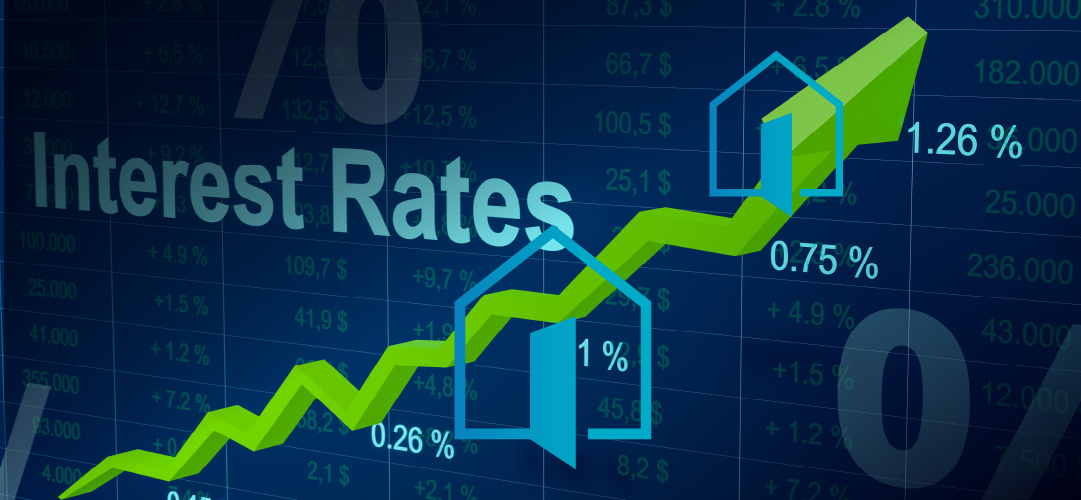Issue 29 - 2022


When a property market turns, the tricks, trends and tactics employed by agents, sellers and buyers change too. If you identify the shift in how the market is functioning, you stand a much better chance of being on the right side of the trade. Those looking to buy or sell in the next few months will be faced with a barrage of dramatic reporting and predictions as mortgage rates rise. Staying calm, up-to-date and pragmatic is the key to winning in the 2022 property market.
Rates will continue to rise, but… wages and rents will also rise, to cushion the impact. Interest rates are rising due to global inflation. With inflation running so hot and an unemployment rate of 4% in Australia, wages are rising. Higher earnings will help owner occupiers.
As you have probably read, rents are rising. There is not a rental crisis in Sydney as much as rents are merely returning to their pre-COVID levels. The rental crisis is mainly in lifestyle locations and regional cities where higher wage earners shifted during COVID and inadvertently imported rental inflation into these lifestyle markets. If population growth explodes in the next 12 months now that the international borders are open, then rents will begin to exceed their pre-COVID levels in the major capital cities. This will help landlords offset rising interest rates.
Get set to read and hear a wave of doomsayers who quote current rental returns and wages as the primary reasons higher mortgage rates will crush the property market. Admittedly, rents and wages have been stagnant for some time now.
“The maths simply won’t work for tens of thousands of households, as interest rates rise” the ‘Permabears’ will argue. This is unsophisticated analysis though. When it comes to markets, nothing happens in isolation. Yes, higher interest rates will put downward pressure on property prices, but the higher rents and wages will act as a support mechanism, to help/hopefully avoid a market crash.
Furthermore, many households took advantage of ultra-low mortgage rates during COVID and fixed their mortgage rates. Interestingly, households seemed to accept that interest rates would rise well before the RBA did.
If the economy and the property market come under sustained pressure as interest rates increase, the RBA, the Federal Government of the day and the retail banks will also respond to support the economy. They cannot and won’t sit idly by. The Federal Budget in April demonstrated that a Government can be nimble and nuanced in their policy response, when required.
Those that fixed their mortgage at the bottom of the rate cycle have clearly beaten the banks in the mortgage market game. Given there were a record number of households that fixed their home loan rate at the time of ultra-low mortgage rates, that trend will now minimise mortgage stress in the housing market, as rates rise.
If households enjoy higher wages, receive higher rents on their investments and/or have fixed their mortgage rates at ultra-low levels, then cases of forced selling in the property market will be moderate.
In 2 to 4 years (2024 – 2026), many of the ultra-low home loans from the COVID era will come up for refinancing. It is at this time that mortgage stress could rise as many people are suddenly exposed to the higher interest rates of the day as their Fixed Home Loan rate expires.
Trading the trend line
A characteristic of a booming market is lots of buyers and few sellers. This was evident during the COVID property boom. Clearly prices rise in this scenario. In rising markets, many people opt to buy and then sell. Even though there is always a risk in buying before you have sold, the risk of selling and watching prices rise by the week is a greater risk.
A characteristic of a depressed market is excess listings relative to buyer demand. Whilst some vendors hold out against the market, the reality is prices fall when the number of sellers outnumber buyers in the marketplace. Many people wisely secure the best sale they can in a depressed market before making a property purchase.
This removes the risk of unintentionally owning two properties in a falling market.
The current market is evenly poised between seller supply and buyer demand. Stock levels are tight due to the Federal Election campaign and the winter market closing in (winter is a traditional slow period for stock levels). However, stock is more likely to increase sharply than decrease in the current environment. Locking in a sale at a good price before buying may be a smarter option in the current market.
Renovation resistance
Everyone has or has heard of a ‘cost blow out’ horror story with a renovation or building project. Unfortunately, large and small building companies, locked into fixed price contracts, are going broke. Others are being squeezed at the margins like never before, through no fault of their own.
Quite simply, the cost of materials and labour is driving construction costs higher. In the real estate market, buyers are shunning unrenovated properties in favour of renovated homes.
Buyers being extremely time poor are also adding to the appeal of a completed property. After years of Sunday night television shows glorifying renovations in a 30-minute program (if only it was that easy), buyers are suddenly extremely hesitant to undertake major building/renovation works.
Even though renovation costs have risen, in many instances, buyers tend to overestimate the cost of these works. And they overcompensate in the offer they make the vendor. Therefore, vendors are better served doing as much work and improvements as practically possible, to lift the standard of their property, before going to market.
The days of unrenovated properties selling for a similar price to a renovated one, are over.

Oblivious
Many vendors are exposing themselves to financial loss in the current market by allowing their selling agents to savagely underquote the value of their property, in the marketing phase of the campaign. The pitch goes along the lines “let’s quote a really low price initially to attract the best buyers and ratchet the price up during the campaign as the buyer competition builds”.
When a property sells for $300,000 or $400,000 above the initial (low) price guide, the agent blames ‘the market’ to the aggrieved underbidders.
In recent times, vendors who have gone along with the underquote ‘tactic’ are oblivious to the risks they are running. In the current market stock levels are higher and the auction clearance rate is now below 50%. The bidding wars that occurred in 2021 are not happening in 2022.
Many vendors have recently experienced a painful reality – if you start with a low price, you may finish the campaign with a low price.
Read our previous article on Accurate Pricing here…
Yes, a vendor can easily pass the property in and/or withdraw from the auction, as 50% of vendors are currently doing. In the process, the $10,000 advertising campaign will have gone up in smoke, as will the $7,500 on styled furniture. It is only at this point that the vendor’s oblivious mindset to the risks they have taken, turns into a definitive financial loss. On those numbers, it’s a financial nightmare for many vendors.
The agent will blame ‘the market’ and move on without any financial loss and probably “rinse and repeat” the same process with someone else. Sometimes it works, sometimes it doesn’t…
The primary consideration for vendors who fail to sell, having consented to their agent underquoting, is the damage that is done to the respective property’s digital footprint. When a seller wants $2.4 million for their home, yet allows their selling agent to advertise it as ‘Guide $1.9 million’ the vendor is usually unaware ‘$1.9 million’ is recorded on property data websites for all time. These data companies won’t delete the pricing history just because the ‘tactic’ didn’t work out as the vendor hoped.
When vendors discover their property has been so viciously devalued, they quickly turn from oblivious to irate. If a vendor wilfully lies or allows their selling agent to lie on their behalf, to buyers about the acceptable selling price, then the vendor owns the result.
“Well, we will just wait!” – is a common response from sellers when it’s suggested their expectations may be above the current market price. In a rising market, waiting is a smart play. If the market is falling, maybe it’s not so smart to wait around.
Patience is a virtue, stubbornness is not.
The property market did not rise as one and it won’t correct as one either. For example, houses outpaced apartments during the boom. During COVID, larger, spacious houses rose faster in price than smaller ones. As the overall market cools in 2022, the prestige end of the market is still booming. If your property is not selling in the current market, it’s best to ask yourself, ‘are we being patient or stubborn?’ Sometimes waiting is the best strategy, sometimes it isn’t.
The market is falling, so let’s grab a bargain – Buyers will begin to hear headlines and anecdotes about, ‘the property market is falling’. If a ‘bargain’ is a buyer’s primary objective, they are more likely to end up with a flawed property than a genuine bargain.
Buyers should remember, the best homes are the least negotiable and vice versa. If you have a long-term perspective for the property you are going to purchase, then you will experience several market cycles in that time. No one really knew where and when the last boom would peak, and no one really knows when the next downturn will bottom out. If you buy quality real estate, you will enjoy higher highs during boom times and higher lows during downturns. Quality is the best criteria for buying a property, not a bargain everyone else has passed over.
Our property is better…
Home sellers understandably compare their property to the sales within the street and/or the immediate surrounds. Whilst their home may be comparable, or genuinely superior to the property that sold down the street last year, the market conditions are not the same. The housing market was stronger last year, and mortgage rates were considerably lower for home buyers. Therefore, in some cases, superior homes may sell for less in 2022 than inferior homes did in 2021 in your street or suburb. The agent is not incompetent, the buyers are not bargain hunters, it’s simply that the property market has considerably changed. Markets rise, markets fall due to a multitude of factors.
The best way to describe the current situation is prices are not falling from fair value, they are falling back to fair value. The 2021 boom was an aberration which the RBA should have addressed sooner.

The real estate market is not a single entity. It consists of millions of people making individual decisions based on their personal needs and opinions. Current real estate trends vary widely from state to state, city to city and even suburb to suburb, making the market virtually impossible to predict with accuracy.
Many sellers base their decision to sell on their own opinion of the real estate market. This opinion is often formed after seeing information that appears to apply broadly and equally across all markets.
However, this information is flawed in a number of ways, initially regarding time frames. Much of the quoted property data is up to three months out of date, and based on broad sales figures that are produced quarterly, or sometimes annually. The real estate market has a history of moving very quickly at times, both up and down.
The other big flaw is that the reporting is based on broad (not local) factors. Very rarely do we see accurate, up-to-date local research reported.
For example, in the Melbourne suburb of Mount Waverley, a property in the correct school catchment for Mount Waverley Secondary College can sell for up to $150,000 more than a similar property a couple of doors down – just because the latter falls outside the catchment area. If the market can vary so dramatically within a street, you can see how hard it is to predict the real estate market as a whole.
Many potential sellers face the dilemma of timing. They want to sell, but also want to know the best time to sell.



